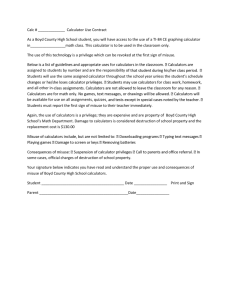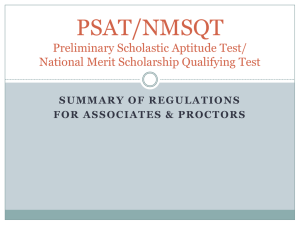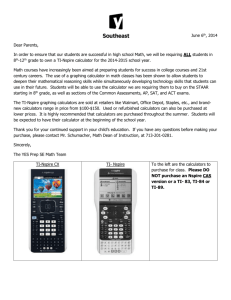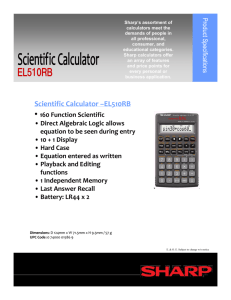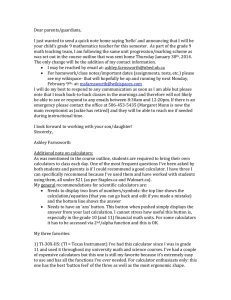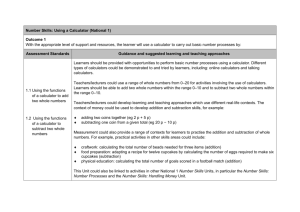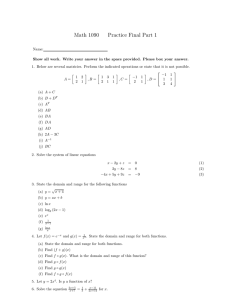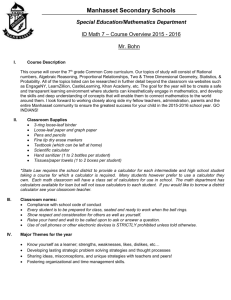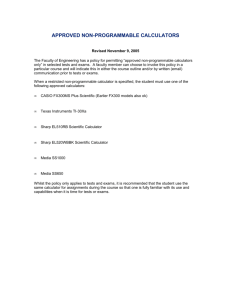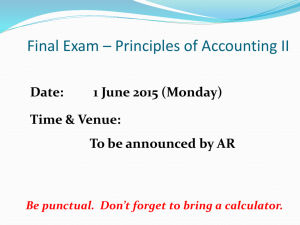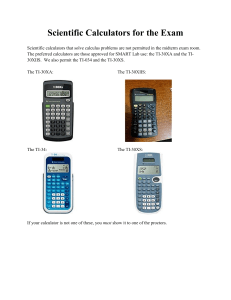Tom Trimbath`s story - Welcome to college My story, 1976, my
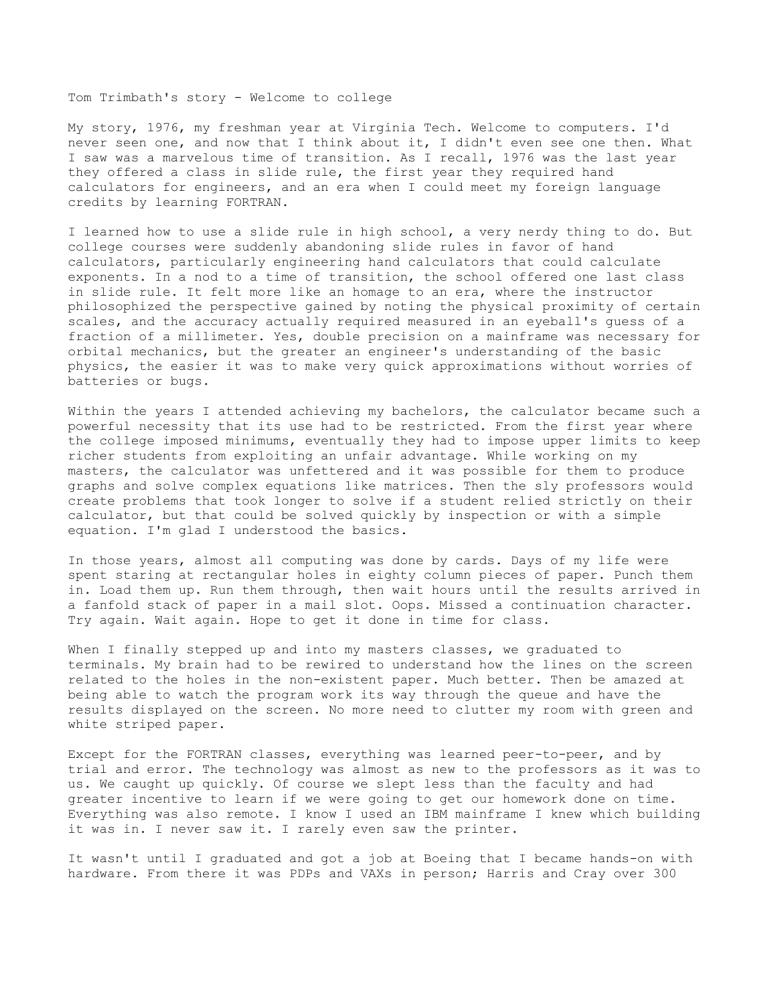
Tom Trimbath's story - Welcome to college
My story, 1976, my freshman year at Virginia Tech. Welcome to computers. I'd never seen one, and now that I think about it, I didn't even see one then. What
I saw was a marvelous time of transition. As I recall, 1976 was the last year they offered a class in slide rule, the first year they required hand calculators for engineers, and an era when I could meet my foreign language credits by learning FORTRAN.
I learned how to use a slide rule in high school, a very nerdy thing to do. But college courses were suddenly abandoning slide rules in favor of hand calculators, particularly engineering hand calculators that could calculate exponents. In a nod to a time of transition, the school offered one last class in slide rule. It felt more like an homage to an era, where the instructor philosophized the perspective gained by noting the physical proximity of certain scales, and the accuracy actually required measured in an eyeball's guess of a fraction of a millimeter. Yes, double precision on a mainframe was necessary for orbital mechanics, but the greater an engineer's understanding of the basic physics, the easier it was to make very quick approximations without worries of batteries or bugs.
Within the years I attended achieving my bachelors, the calculator became such a powerful necessity that its use had to be restricted. From the first year where the college imposed minimums, eventually they had to impose upper limits to keep richer students from exploiting an unfair advantage. While working on my masters, the calculator was unfettered and it was possible for them to produce graphs and solve complex equations like matrices. Then the sly professors would create problems that took longer to solve if a student relied strictly on their calculator, but that could be solved quickly by inspection or with a simple equation. I'm glad I understood the basics.
In those years, almost all computing was done by cards. Days of my life were spent staring at rectangular holes in eighty column pieces of paper. Punch them in. Load them up. Run them through, then wait hours until the results arrived in a fanfold stack of paper in a mail slot. Oops. Missed a continuation character.
Try again. Wait again. Hope to get it done in time for class.
When I finally stepped up and into my masters classes, we graduated to terminals. My brain had to be rewired to understand how the lines on the screen related to the holes in the non-existent paper. Much better. Then be amazed at being able to watch the program work its way through the queue and have the results displayed on the screen. No more need to clutter my room with green and white striped paper.
Except for the FORTRAN classes, everything was learned peer-to-peer, and by trial and error. The technology was almost as new to the professors as it was to us. We caught up quickly. Of course we slept less than the faculty and had greater incentive to learn if we were going to get our homework done on time.
Everything was also remote. I know I used an IBM mainframe I knew which building it was in. I never saw it. I rarely even saw the printer.
It wasn't until I graduated and got a job at Boeing that I became hands-on with hardware. From there it was PDPs and VAXs in person; Harris and Cray over 300
baud dial-up modems; and joining the bureaucratic fight to get PCs in the door and on our desks. But that's another story.

